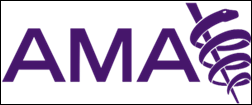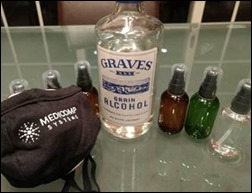"most people just go to Epic" that's a problem because then EPIC becomes a monopoly in healthcare, if it isn't…
EPtalk by Dr. Jayne 9/3/20
It’s been a busy week in the consulting trenches. Several of my clients had projects that they wanted to take live on September 1. I commend them for choosing that as a go-live date because it’s a Tuesday. Far too many people want to do go-lives on Mondays.
I’m usually opposed to Monday go-lives because it’s typically a busy day, whether you’re in the inpatient world or the outpatient world. Patients who have been ill over the weekend are trying to get appointments and complex surgeries are often scheduled earlier in the week to better optimize discharge planning prior to the weekend. I’m also a fan of doing go-lives on Thursdays, because if it’s rocky, you only have two days in the week and then people can rest over the weekend. Even in hospitals, things are slower over the weekend and many services are only offered on an emergency basis.
![]()
CMS has released the Fiscal Year 2021 Inpatient Prospective Payment Systems (IPPS) for Acute Care Hospitals and the Long-Term Care Hospital (LTCH) Prospective Payment System (PPS) Final Rule. That’s certainly a mouthful, and I’m not sure the abbreviations help. There are several highlights within the Medicare Promoting Interoperability program. Some of these make perfect sense, such as being to use any continuous 90-day period as the EHR reporting period, and keeping the measure that looks at queries of Prescription Drug Monitoring Programs as optional. Others leave me scratching my head, such as “Modifying the name of the Support Electronic Referral Loops by Receiving and Incorporating Health Information measure to the Support Electronic Referral Loops by Receiving and Reconciling Health Information measure.” I get that they’re trying to better describe what hospitals have to do, but it just adds to the confusion.

The American Medical Association released the 2021 Current Procedural Terminology (CPT) code set this week. There are some major changes involved, with one outlet describing it as the first major overhaul in more than 25 years. The changes coincide with those proposed by the Centers for Medicare & Medicaid Services and are intended, according to AMA, to free physicians from “irrelevant administrative burdens that led to time-wasting note bloat and box checking.” Office-based clinicians will certainly welcome the elimination of specific history and physical exam elements for code determination.
Since AMA owns the rights to the codes, they’re happy to sell you resources to support the transition, including books and videos. If you use an EHR, chances are that the AMA license fee is already baked into what you are paying for maintenance. Personally, I think if Medicare requires use of something it, should be in the public domain, but there’s too much money and lobbying involved to make a change.
ONC has opened a funding opportunity to “measure the use and impacts of health IT among a nationally representative sample of US office-based physicians” as well as to “produce national-level data on interoperability among office-based physicians.” Prospects have until September 11 to apply. The awardee will run a three-year program to gather “insights on the implementation and effects of federal health IT policies as well as identify disparities or unintended consequences resulting from their implementation.” Funding is $290,000 for the first year with additional funds “subject to availability and progress made against the program.” The program starts September 30, 2020, so it looks like ONC is ready to make a quick decision.
New data from the Centers for Disease Control shows that nearly 30% of healthcare workers with COVID-19 were asymptomatic and nearly 70% reported never having been formally diagnosed with COVID. Researchers looked at 13 hospitals across the US, where up to 6% of staff caring for COVID-patients had tested positive themselves. The concern is that those symptom-free staffers may have spread the infection to patients and co-workers. The report concludes that universal masking of healthcare workers is important, as is a coordinated testing program for frontline workers.
I see patients with COVID every time I work. The highest number of positives I’ve seen in a single work day is 20, which is a lot. Fortunately, my time in the room with patients is limited. I’ve been fortunate to have enough N95 masks so that I don’t have to reuse them too many times, and a family friend made me a fantastically lightweight face shield. Still, being constantly exposed is a stressor and I try not to interact with people in person if I don’t have to, although it’s rough. I’ve made a couple of exceptions, but with distancing and masking, and always with transparency about my exposure history.
I’ve also had the benefit of being able to stack my clinical shifts recently, so I work a ton at once but then have longer stretches without face-to-face patient care. Even with my healthcare friends, we debate who has been the most exposed and whether getting together in person would be riskier than anything else we do. I’d like nothing more than to sit and sip a cocktail and decompress with one friend in particular, but I’m not sure how long it will be before we both feel the timing is right.

I had a chance to play the Zoom Happy Hour game with one of my friends this week, which was tons of fun with lots of laughing involved. She’s a total extrovert and it was great to swap stories about the “new normal” in our respective parts of the country. I’ve been making it a point to connect with people who’d I usually see while traveling since my next business trip is probably months off. As a foodie who loves to try new things across the US, sticking close to home has been a challenge. I’ve checked out a bunch of cookbooks from the library, but unsurprisingly, this cocktail edition is my new favorite.

While we’re in the boozy frame of mind, big props to my friends at Medicomp Systems for sending another care package my way. I’m resupplied with N95 masks along with some Medicomp ones, which I really like because they’re adjustable and don’t sag. They also included some high-octane hand sanitizer supplies, including handy bottles for pocket or purse. I was also advised that the large bottle could be used either as a refill or for slamming down during a zoom meeting. Based on some of the calls I’ve had lately, I’m not opposed to it.
Have you made your own homebrew hand sanitizer or are you sticking with Purell? Leave a comment or email me.

Email Dr. Jayne.


Funny how the AMA is supposed to serve physicians and the public, but ends up having a negative effect on both. The country would be better off without the AMA
Why should IP created by a private organization be in the public domain? Say what you want about AMA, but CMS is the one choosing to use that system, so why shouldn’t the federal agency pay for the license and make it available when it is required (based on the recent HHS PR contract, there are funds available)? Otherwise, it sounds very much like eminent domain…
Hand sanitizer? Straight up 91% isopropyl in old gel containers with or without less than 10% aloe gel now it is available.
” if Medicare requires use of something it, should be in the public domain, but there’s too much money and lobbying involved to make a change” nailed it. But isn’t money and lobbying so much of what has led to our great American non-system in the first place?